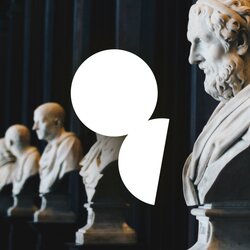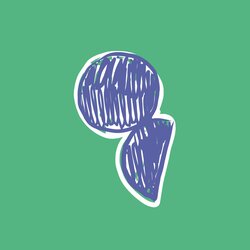3 Answers
Leave a Reply
You must Register - Login to add an answer.
4 Answers
Truth is the correspondence between thought and reality.�This correspondence is established through experience (observation) or reason (reasoning).
Take the statement�”It's night now.”�
Using surveillance, you can look out the window and make sure that it is really night. Or you can use the following reasoning:”If the clock shows 03: 00 and 03: 00 is night time, then it is night ” �and arrive at the same truth.
The truth {i.e., the one that is in reality the Truth (of Truths), i.e. it is about the one that, from the beginning, is the only one, in contrast to the logical but, nevertheless (in the nature of nature) – secondary definitions – formulations – of its own, in this or that-Truth} – this is the fundamental Basis in the Universe (the Source of the origin and existence of True Life), which consists in the fact that in the entire Universe, created (through the breath – Spirit (Holy)), there is only one – Truth, without True in everything and always There can be no truth — no truth. And without the Truth, that is, without the Truth that is true in everything and always, True Life cannot arise and exist in one form or another.
The appearance or existence in the Universe of this or that form of existence outside the Truth is a lie that replaces the Truth, arises and exists from the breath of the spirit of falsehood — a lie.
That is, the appearance or existence of anything in the universe, by means of Truth, is True Life, and the appearance or existence of anything, by means of falsehood, is not life.
Quote from the book: “Under the caring hand of the Creator” (https://ridero.ru/books/pod_zabotlivoi_rukoi_tvorca/).
There is no single truth, which was guessed in antiquity, but most of all paid attention to this issue in modern times and the Enlightenment, so there are four main” types ” or theories of truth:
Conventional — what is established by a contract is true, in other words, what is agreed to be true (politics, science).�
Coherent — something that meets the truth criteria (correspondence between the observed and the “real”, etc.) is true.;
Authoritarian — what is truly taken or learned from an authoritative source (religion, partly philosophy);
Pragmatic — what is truly “useful” (American philosophy of pragmatism, some philosophical trends of post-modernism, etc.)
Truth – full compliance�of the definition of an object with its essence. If our definition is generally consistent with the object, but some individual properties of the object are not taken into account in it, “it will” reflect approximate, but not true knowledge.
There is an opinion that the truth is always contradictory. Dialectic is a great thing.
Leave a Reply
You must Register - Login to add an answer.
4 Answers
- There is only one truth, but everyone has their own truth.
- Also, truth is a philosophical and religious category, and truth refers to everyday concepts.
It is worth immediately clarifying that there is no one unshakable truth for everyone! The truth is the most persistent basic belief of a person, on the basis of which and in accordance with which he creates his reality and perceives his creation.
The truth can change in a person over the course of life, if he changes his worldview and beliefs to others.
In other words, truth is a dominant belief that determines the vector of development of human experience.
Accordingly, each has its own truth. There are some similar aspects of people's basic beliefs, but there are no completely identical ideas about the truth. Each person is unique, and so is their set of beliefs.
Truth is just one of the angles of perception and interaction with the nature of your reality. This is one of many concepts.
Any of the truths as a concept claims exclusivity and denies all other concepts that contradict it as fundamentally false. And the whole reality of a person based on a particular truth is built within the framework of this concept, and it is limited by it. Thus, a person who does not recognize any other concepts, denies all beliefs that do not correspond to his personal truth, greatly restricts his perception and slows down the natural processes of harmonious development of the individual.
Realizing that only you create your own reality, building it in accordance with your basic beliefs and ideas about yourself and the world, you can expand your basic limiting settings, beliefs, replacing them with new ones that will satisfy the individual with their manifestations in the physical world and create new inspiring opportunities in exploring your multidimensional essence.
Lelya Vesna
The truth cannot be described in words.
This is something that needs to be experienced.
You'll find her soon enough.
You knew, how could you forget?
You saw her and laughed at her.
You heard it and shed tears.
You shone when you touched her.
Have you forgotten her?”
Personally, I like the Wiktionary explanation-meaning: 1 What exists “objectively, the real state of affairs”; 2 The truth.
And all these philosophical, endless reflections and pulling the blanket from one side to the other, lead people to an endless wandering through the forest, shouting ” ow! Ow! where are you truth!? who are you? what do you look like? people, help me, I do not know who I am looking for!” We won't find anything that way.
I like to compare the truth (truth) with gold.
Gold exists, but it is not found everywhere. Different pieces of gold are still gold. Gold exists in alloys, in impurities.
So the truth (truth) is quite achievable and can be used. There are varieties of truth and they are scattered, in different sized patches, in the existing information.
The opposite of true is false. And a lie is a lie. So you don't need to blow fog and muddy the water. Tell yourself the truth more often and you will become closer to the truth – you will become more true. You will become the golden man.😁
Truth is objective knowledge that corresponds to reality and does not depend on the evaluative opinion of the knower.
It is important to distinguish the truth from the truth:
For more information, see the social studies textbook.
Leave a Reply
You must Register - Login to add an answer.


About Reality and Truth
The projections of the entire set of processes occurring in the Infinite (including processes initiated by the person himself) that are accessible to the human consciousness are Reality.
The part of Reality perceived by the measured consciousness “here and now” is the Truth.
Since the perception of Reality is carried out by the “consciousness clouded by the soul”, it (the Truth) is far from what it IS.
(“Theses of” Living “Knowledge” are presented to the reader in the form of a single information block. For a clear understanding of the essence of what is stated, it is necessary to get acquainted with them in a comprehensive and consistent way, without splitting them into parts and not pulling individual chapters out of context. Equally paying attention to the accompanying footnotes.)
The truth is not established by philosophical verbiage with a capital letter-one of the proper names of Christ (if you remember from the school course of the Russian language what a proper name is). In non-religious matters, the truth is not abstract, but correlates with the object under discussion. The truth “two plus two equals four” is related to mathematical calculations, the truth “my mother's name is Natasha” is related to establishing kinship, and so on.
Truth – verifiable, repeatable, and provable. The truth is always stronger than the lie.
You can always get to the truth.
There would be a desire to understand. But more often it just doesn't exist. Or the truth is not needed.
I wrote on this topic recently:
http://www.crawler.pro/news/2020/teoriya-pravdy.html